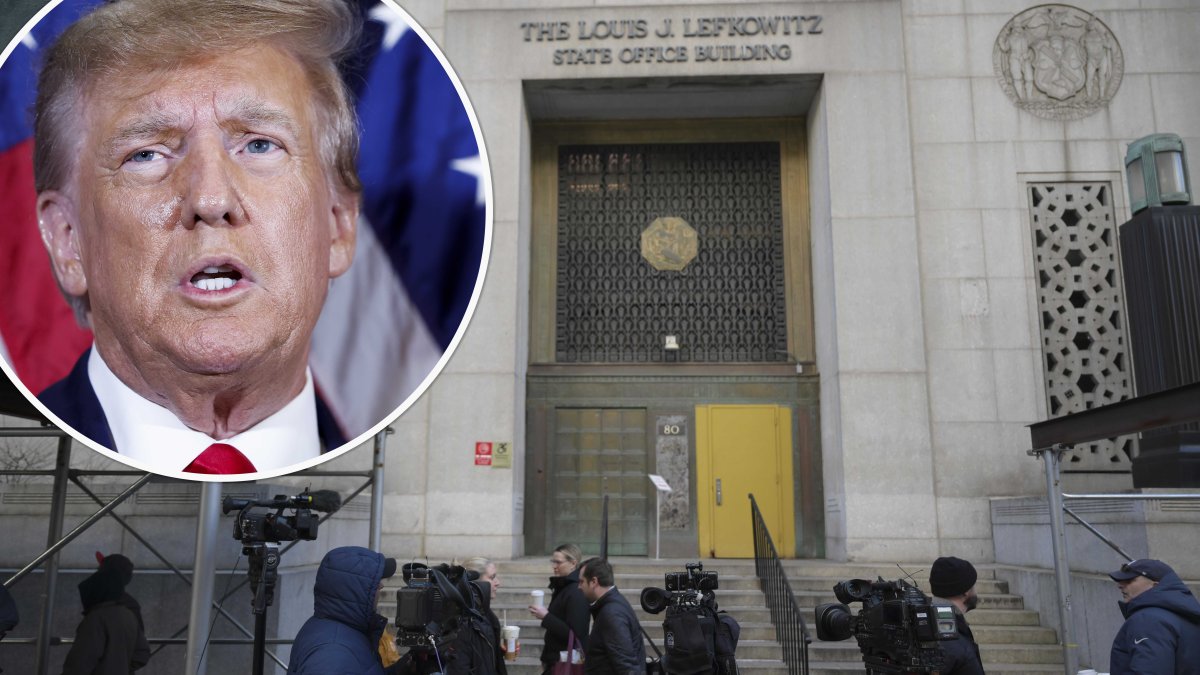NEW YORK — Former President Donald Trump was indicted Thursday in Manhattan in connection with a case involving alleged secret cash payments to porn star Stormy Daniels during the 2016 presidential campaign.
Trump, who has twice faced impeachment trials in Congress, is the first former president in US history to face criminal charges, and the developments could have significant implications for the presidential election of 2024.
It is unclear which charge or charges Trump is facing. The Manhattan District Attorney’s Office did not announce it.
The 76-year-old former president had insisted he would continue to seek the Republican nomination even if the grand jury voted in favor of impeachment. Legally, an indictment does not prevent you from presenting yourself.
Prosecutors have been investigating since Trump’s former personal attorney Michael Cohen admitted in 2018 that he paid Daniels $130,000 before the presidential election to cover up his claims about an alleged sexual relationship the pair had. years earlier.
Political analyst Carlos Vargas claimed that this accusation will unite the bases of the Republican Party for the next elections.
Following the shocking development, the former president’s lawyers issued a brief statement: “President Trump has been indicted. He has committed no crime. We will vigorously fight this impeachment in court.”
For his part, Trump also released his own statement, saying in part, “I think this witch hunt will backfire on Joe Biden. The American people realize exactly what the radical left Democrats are doing here. Everyone can see it. and our Party, united and strong, will first defeat Alvin Bragg, then we will defeat Joe Biden, and we will get all those crooked Democrats out of office so we can MAKE AMERICA GREAT! »
Two sources close to the situation told our sister network BNC News that Trump’s lawyers are already in contact with prosecutors and expect him to be arraigned next week.
But how does the process work? We explain to you.
HOW DOES THE GRAND JURY PROCESS WORK?
The role of the grand jury is to determine if there are probable grounds to believe that a person has committed a crime and should be tried.
Prosecutors enter the courtroom with the jury to read the offences/charges and define the elements of the offences.
If 12 or more jurors do not believe a crime has been committed, the case is dismissed.
If 12 vote yes, the indictment is drafted and presented to the jury to ensure it is correct and the foreman will sign it if correct (at this point this is called the “real bill”).
Although there is no specific time limit for this, at some point the jury’s indictment is filed sealed with the court.
Presentation is the key action that needs to be done. If it hasn’t been filed, it’s not a done deal.
If it is filed under seal, no one but court staff and prosecutors can see it.
After the indictment is filed, the prosecutor will usually contact the defendant’s attorneys to tell them that their client must surrender or provide an arraignment date.
Typically, the prosecutor then receives an opening order from the judge, so they can alert the public and also give a copy to the defense (until then they are technically not allowed).
The defendant is then prosecuted (which is not public) and is prosecuted by a judge (which is public).
It is possible for an accused to surrender before the indictment is made public, in which case the public may see the accused arrive in court before the indictment is officially announced.
An update of the study.

